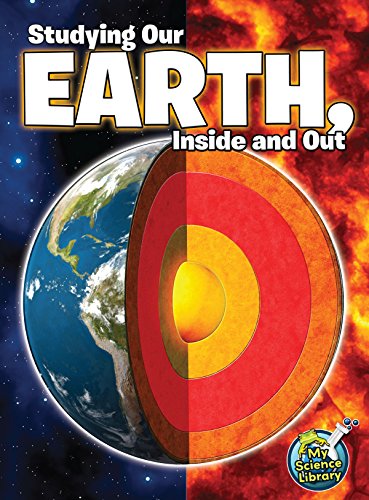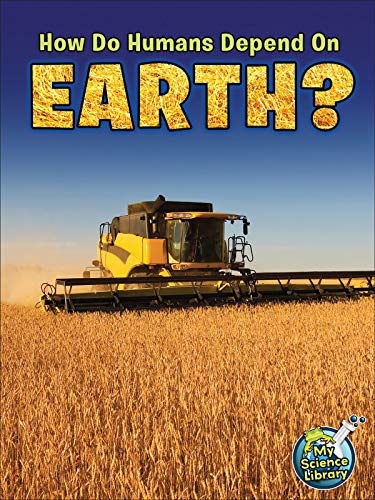-
Atoms and Molecules
Tracy Maurer
Library Binding (Rourke Educational Media, Aug. 1, 2012)Maurer, Tracy Nelson V
V
-
Using Tools To Understand Our World
Kelli Hicks
Paperback (Rourke Educational Media, Aug. 1, 2012)The Tools Used By Scientists Are Addressed In This Title. Beakers, Scales, Microscopes, Scientific Calculators, And Other Important Things Used To Investigate And Create New Technology. Communicating With These Tools Via Satellite Or Sensors That Are Being Developed To Warn People Of Tsunamis Are Just Part Of The Many Science Tools Talked About In This Title. Y
Y
-
Studying Our Earth, Inside and Out
Kimberly Hutmacher
Library Binding (Rourke Educational Media, Aug. 1, 2012)In Studying Our Earth, Inside and Out, readers will learn in depth information about the layers of Earth and our changing landscape. Featuring real-life photographs, fascinating facts, a comprehension and extension section, and more, readers stay engaged while learning and strengthening their reading comprehension skills. My Science Library's rich, content-filled text and beautiful photographs bring science and the scientific process to life for readers. The series includes interesting facts about the Earth, the solar system, matter, energy, forces and motion, and life on our planet. The engaging text makes learning about science fun. Q
Q
-
Seeds, Bees, and Pollen
Julie Lundgren
Library Binding (Rourke Educational Media, Aug. 1, 2011)Intermediate Readers Discover The Different Ways Plants Reproduce. S
S
-
Life on a Young Planet: The First Three Billion Years of Evolution on Earth
Andrew H. Knoll
Paperback (Princeton University Press, Sept. 19, 2004)Australopithecines, dinosaurs, trilobites--such fossils conjure up images of lost worlds filled with vanished organisms. But in the full history of life, ancient animals, even the trilobites, form only the half-billion-year tip of a nearly four-billion-year iceberg. Andrew Knoll explores the deep history of life from its origins on a young planet to the incredible Cambrian explosion, presenting a compelling new explanation for the emergence of biological novelty. The very latest discoveries in paleontology--many of them made by the author and his students--are integrated with emerging insights from molecular biology and earth system science to forge a broad understanding of how the biological diversity that surrounds us came to be. Moving from Siberia to Namibia to the Bahamas, Knoll shows how life and environment have evolved together through Earth's history. Innovations in biology have helped shape our air and oceans, and, just as surely, environmental change has influenced the course of evolution, repeatedly closing off opportunities for some species while opening avenues for others. Readers go into the field to confront fossils, enter the lab to discern the inner workings of cells, and alight on Mars to ask how our terrestrial experience can guide exploration for life beyond our planet. Along the way, Knoll brings us up-to-date on some of science's hottest questions, from the oldest fossils and claims of life beyond the Earth to the hypothesis of global glaciation and Knoll's own unifying concept of ''permissive ecology.'' In laying bare Earth's deepest biological roots, Life on a Young Planet helps us understand our own place in the universe--and our responsibility as stewards of a world four billion years in the making.
-
I Can Prove It!
Kelli Hicks
Paperback (Rourke Educational Media, Aug. 1, 2012)This Title Is All About The Scientific Method Of Conducting An Experiment. The Book Gives Detailed Information On Every Step A Scientist Goes Through , From Hypothesis To Communicating The Results. Great Tool For Science Projects. Q
Q
-
Plants As Food, Fuel, and Medicine
Julie Lundgren
Library Binding (Rourke Educational Media, Aug. 1, 2012)How Our Earth And Existence Depend On Plants Is Introduced In This Title. Their Uses For Food, Alternative Forms Of Fuel, And Everyday Discoveries Of How Plants Have A Medicinal Effect On Curing Diseases And Promoting Good Health Are All Addressed. Introduces Their Role In Preventing And Reversing The Important Issue Of Global Warming Helps Introduce Students To Just How Important Plants Are. S
S
-
Light Sound and Electricity
Phillip Clarke, Alastair Smith, Corinne Henderson, Kirsteen Rogers, Laura Howell, Judy Tatchell, Verinder Bhachu
Paperback (Usborne Pub Ltd, Jan. 1, 2002)Provides information on light, sound, and electricity, describes how various electrical and electronic devices work, and recommends related Web sites. W
W
-
Plants Make Their Own Food
Julie Lundgren
Library Binding (Rourke Educational Media, Aug. 1, 2011)Plants Make Their Own Food (My Science Library) M
M
-
How Do Humans Depend on Earth?
Julie Lundgren
Library Binding (Rourke Educational Media, Aug. 1, 2012)Lundgren, Julie K. Z
Z
-
Living or Nonliving?
Kelli Hicks
Library Binding (Rourke Educational Media, Aug. 1, 2011)Hicks, Keli L. O
O
-
I Use Simple Machines
Buffy Silverman
Library Binding (Rourke Educational Media, Aug. 1, 2011)Silverman, Buffy S
S